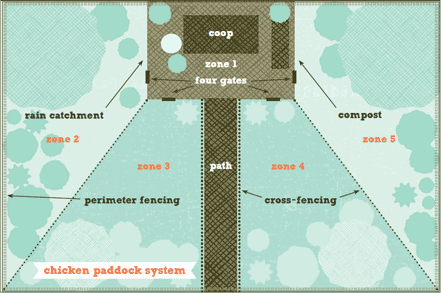24 Apr Urban Farm Challenge: Growing Food for Your Chickens
We are excited to be participating in the Sustainable Eats Urban Farm Handbook Challenge this month! Annette Cottrell and Joshua McNichols have written a fantastic new book Urban Farm Handbook: City Slicker Resources for Growing, Raising, Sourcing, Trading, and Preparing What You Eat, which my new favorite Urban Farming resource. I have been recommending it to clients and to friends since I first got my hands on a copy!

Not everyone can garden *with* their chickens (for pest control, aeration etc), but gardeners with chickens can certainly grow food for their flock. And in most cases, growing food for chickens means we are growing food for ourselves. Afterall, what we feed the chickens is ultimately what we eat via their eggs and meat.
So, my Urban Farm challenge is to take a good look at 3 elements of your chicken system and ask yourself some questions:
1) What do you currently feed your chickens? Is your feed a pelletized product trucked from across the country? Is it a local, organic grain mix? What would you do if you were in a bind if you had no feed? How much are you supplementing their diet? How sustainable is your current chicken food system?
2) What is already growing in your garden that you can feed your flock? What can you add to your garden specifically for the chooks?
- Fruit from trees and cane berries
- Greens – be it “weeds” or from a special chicken forage seed mix
- Vegetables you’ve grown or after the leftover kitchen scraps (go easy on any processed food snacks – we don’t want diabetic chickens!)
- Seeds from plants you’ve grown
- A fodder system – a simple way to grow sprouts for the birds in several trays that can be rotated
- Worms – from your vermicompost systems (red or meal worms)
- What else are you growing for your hens?
3) Is your garden set up so that plants are accessible for your chickens when you want them to be accessible, and protected otherwise? How can you make your system easier for yourself to maintain and easier for the chickens to access? Below is a sample drawing from my book of a paddock system. You can fence different areas of your garden for the chickens to be rotated through, this allows the plants to be grazed at specific times of the year and then when the chickens are rotated to another area, the other zones have a chance to recover and grow back.
Be sure to comment below about your chicken forage plans and let us know what kind for things you are growing specifically for your flock! If you have a blog post about what you’ve done be sure to share a link. And don’t forget to head back over to Sustainable Eats to comment as there will be a lot of great prize to win, including a copy of my book!



